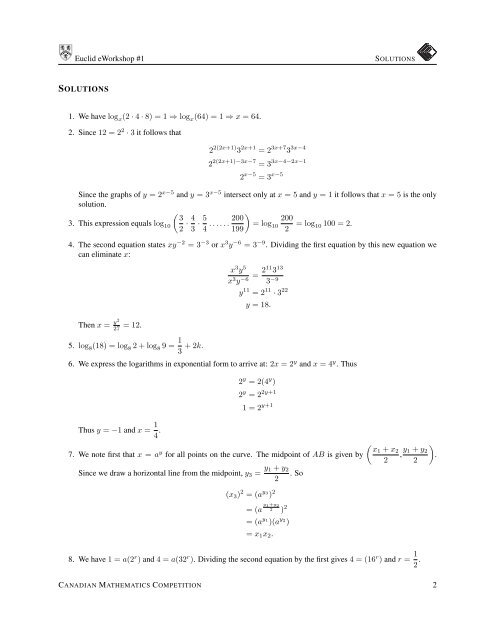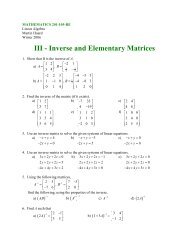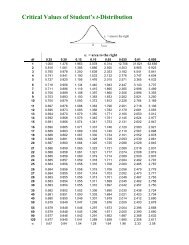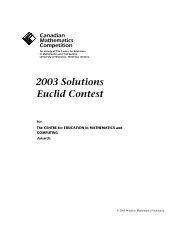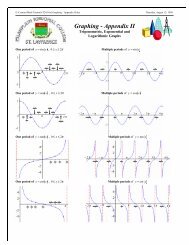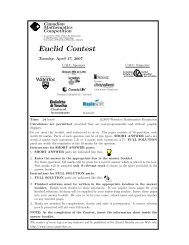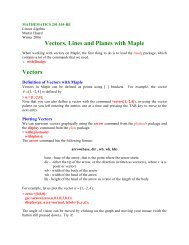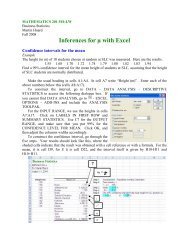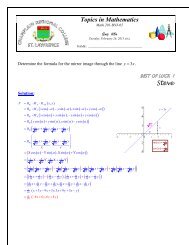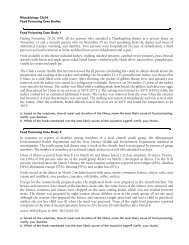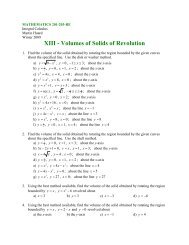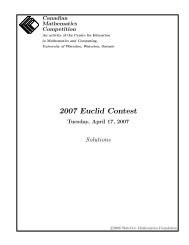view solutions - CEMC - University of Waterloo
view solutions - CEMC - University of Waterloo
view solutions - CEMC - University of Waterloo
Create successful ePaper yourself
Turn your PDF publications into a flip-book with our unique Google optimized e-Paper software.
Euclid eWorkshop #1SOLUTIONSSOLUTIONS1. We have log x (2 · 4 · 8) = 1 ⇒ log x (64) = 1 ⇒ x = 64.2. Since 12 = 2 2 · 3 it follows that2 2(2x+1) 3 2x+1 = 2 3x+7 3 3x−42 2(2x+1)−3x−7 = 3 3x−4−2x−12 x−5 = 3 x−5Since the graphs <strong>of</strong> y = 2 x−5 and y = 3 x−5 intersect only at x = 5 and y = 1 it follows that x = 5 is the onlysolution.( 33. This expression equals log 102 · 43 · 54 . . . . . . 200 )200= log199 102 = log 10 100 = 2.4. The second equation states xy −2 = 3 −3 or x 3 y −6 = 3 −9 . Dividing the first equation by this new equation wecan eliminate x:Then x = y227 = 12.5. log 8 (18) = log 8 2 + log 8 9 = 1 3 + 2k.x 3 y 5x 3 y −6 = 211 3 133 −9y 11 = 2 11 · 3 22y = 18.6. We express the logarithms in exponential form to arrive at: 2x = 2 y and x = 4 y . ThusThus y = −1 and x = 1 4 .2 y = 2(4 y )2 y = 2 2y+11 = 2 y+1(7. We note first that x = a y x1 + x 2for all points on the curve. The midpoint <strong>of</strong> AB is given by , y )1 + y 2.2 2Since we draw a horizontal line from the midpoint, y 3 = y 1 + y 2. So2(x 3 ) 2 = (a y3 ) 2= (a y 1 +y 22 ) 2= (a y1 )(a y2 )= x 1 x 2 .8. We have 1 = a(2 r ) and 4 = a(32 r ). Dividing the second equation by the first gives 4 = (16 r ) and r = 1 2 .CANADIAN MATHEMATICS COMPETITION 2


